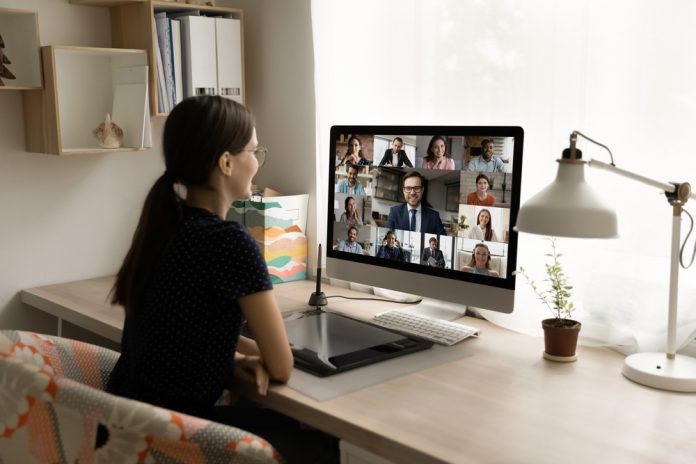
Setting up a virtual event can be a daunting task. There are a myriad of moving parts including technology, content, speakers, and ensuring the audience walks away with the right messaging. We’ll take you through how to plan a successful online event, from setting objectives to effective engagement strategies.
#1: Clarify Objectives
Event planning—no matter the format—is all about setting, meeting, and exceeding expectations. You probably know why you want to host the event, and clearly writing out the end goals will help you stay on task.
Next, consider the needs of all the parties involved. Ask, “Who’s the host?”. Maybe it’s you, or maybe it’s your boss or a hired expert tasked to train the team on specific content. Each stakeholder will have different objectives. What is each trying to accomplish? Write them all down, then rank them in order of priority for the company.
Then, put yourself in the shoes of the attendee. Why are they attending? What would make them feel like their time spent was worthwhile?
If you’ve already selected the presenters for the event, think about their objectives, too. Each might have different reasons for agreeing to the event and different goal outcomes. A happy presenter will be more likely to go above and beyond to make your event a success.
#2. Select Your Speakers/Presenters
Careful, tactful screenings and interviews will help to identify the best people to achieve your objectives.
First, do your research. Leverage presenter websites, social media, and previous talks (YouTube is your friend!) to assess whether they’re a fit for your audience.
Do a practice interview in the virtual format you’ll use for your event. Pay attention to how your potential speaker presents themselves, including voice, lighting, and ease on camera. Do you enjoy engaging with them?
#3: Identify Challenges Before They Happen
Virtual events have unique challenges and limitations. Forecasting what could go wrong will ensure the event goes smoothly. Here are some things to think about:
- Ask: What are the event components, and will it be possible to pull them off successfully in the digital space?
- Identify possible external stimuli for all the parties involved. Does the event conflict with mealtime or a major televised event? Try to accommodate your guests for maximum attendance and engagement.
- How will guests interact with each other? It’s much harder for attendees to connect without facilitated moments to engage with each other. Plan and test these ahead of time.
#4: Map the Event: Create a Run of Show
If you were going on a road trip, would you leave without your GPS? Mapping out your direction, timing, and rest stops is also key to event planning. Envision the event from start to finish and write down all the components. Once that map (in events it’s called a “run of show”) is created – distribute it! All of the presenters should have a copy and understand their role. It’s not always necessary for guests to receive this document, but it’s worth asking: “Would it be better if attendees had this information?”. Here are some things to think about when creating a run-of-show:
-
Before
- What’s the technology and how will guests access it? Guests will be more likely to attend when and where you want them to with some guidance. Offer a calendar invitation with clear login instructions, allow early access, and alert people how to find help should they need it. Assigning an IT person to the event for emergency guidance will alleviate stress.
- Does the presenter have their technology figured out, too? Ensure they have stable internet connection, adequate lighting, appropriate camera positioning, and microphone functionality. Check these things ahead of time, ideally a few days before the event and at the same time of day as the event, so that you can make adjustments.
-
During
- Do you want participants to have their cameras and microphones on? Depending on the platform, you can facilitate this ahead of time with pre-settings, then reiterate once the event starts.
- Is the presenter prepared? When choosing presenters for an event, someone with experience and flair for the art of public engagement is ideal. However, that’s often out of our hands (e.g. your boss wants to give a presentation or the sales department wants to pitch the product). You can still provide coaching to ensure the speaker knows what they’re doing and the material fits the audience.
- Icebreakers — a good idea? Before you commit to this default event component, revisit your objectives and goals. If you didn’t write down that it’s important for people to know one abstract fact about each other, you might want to reconsider your icebreaker. If you decide an icebreaker IS a good idea, consider your group size. Individual introductions for a large group can be tedious and set a tone of disrespect for people’s time. Using the chat box for responses to a host’s question to the entire group can be an effective way to accomplish this same goal.
-
After
- Who’s closing the event? Will there be a Q&A? If so, will guests submit questions ahead of time for event host screening and selection? Can guests contact the presenters? Do you want post-event feedback? These are all things to think about to ensure the event ends on a good note.
As Confucius said, “A man who does not plan long ahead will find trouble at his door.” By following this guide, you’ve already done a significant portion of the work to make your event amazing. At the end of the day, a successful virtual event is one that makes attendees feel like their presence matters. By planning ahead, you’re thinking through this audience’s feelings and how to achieve them.



